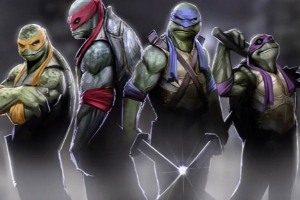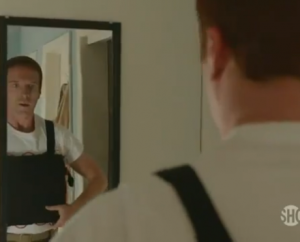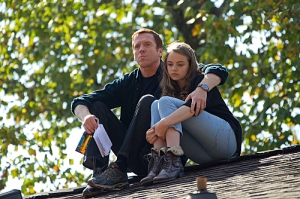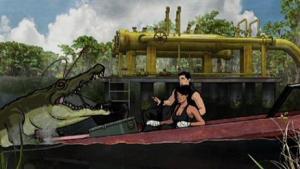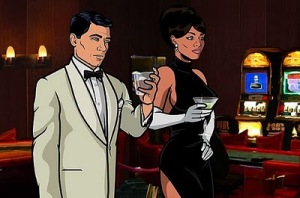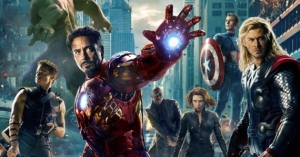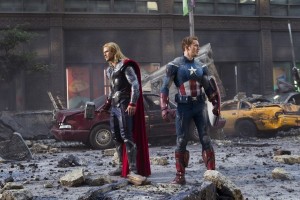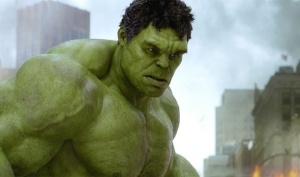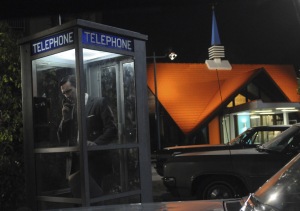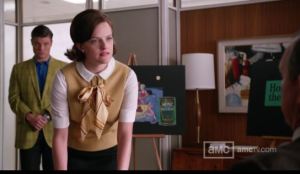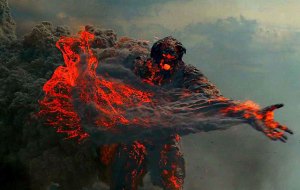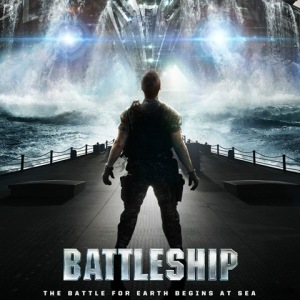It’s the time of the month again to stop and look at the impending movies being released over the course of the next month in the latest edition of Upcoming for May 2012. This month sees a host of comedy films coming out ahead of blockbuster season, with a few potential dramatic gems hidden amongst them. Without a big attraction picture scheduled for the month though, it’ll be interesting to consider which film will be worthy of being the pick of the month here at RhettMedia.
American Reunion, Released 2 May
Returning for the eighth movie in the series and fourth with the central cast appearing,  American Reunion is the latest chapter in the tried and tested American Pie formula. Thirteen years on from the original, Jason Biggs, Alyson Hannigan and Seann William Scott reprise their roles in the comedy series, with the premise of the original high school group attending a reunion as fully fledged adults.
American Reunion is the latest chapter in the tried and tested American Pie formula. Thirteen years on from the original, Jason Biggs, Alyson Hannigan and Seann William Scott reprise their roles in the comedy series, with the premise of the original high school group attending a reunion as fully fledged adults.
What follows is an inevitable amount of immature comedy based on sexual innuendo and gross-out moments which made the series such a resounding success. Though probably being unable to recapture the magic that appealed to so many in the first instalments due to an aging cast and the maturation of the target audience who remember the originals, it is still unsurprising that American Reunion has made a substantially flattering profit already due to the success and name recognition of the American Pie franchise.
Watch/avoid: Despite its financial success, the movie has received mediocre reviews and it’s not hard to see why, with aging performers such as Biggs and Hannigan outgrowing these roles years ago. Hopefully this is the last cash-in on the franchise, but still probably deserves an AVOID.
Jeff, Who Lives At Home, Released 11 May
In the second movie of the month to feature one of the main How I Met Your Mother stars, Jason Segel takes on the role of the titular Jeff in indie comedy Jeff, Who Lives At Home. The premise  of the film relies on two brothers who attempt to come to terms with their disappointing lives with Segel’s character stuck in their parents’ basement and Ed Helms playing his brother dealing with a rapidly disintegrating marriage.
of the film relies on two brothers who attempt to come to terms with their disappointing lives with Segel’s character stuck in their parents’ basement and Ed Helms playing his brother dealing with a rapidly disintegrating marriage.
Pairing up two differing personalities as brothers, the movie concentrates on their relationship and both characters getting their lives on track. Segel looks to be playing the similar role of the relatable, likeable loser with enough dorky charm to make you root for him, so while it doesn’t look like he’s exactly reaching very far into his acting reserves, it is clear that there’ll be a dependable protagonist for an audience to rally behind. The movie opened to mixed reviews, but the response has been largely positive and with the anchoring two actors in charge and a reputable supporting cast featuring Susan Sarandon and the talented Judy Greer, it’s not hard to see why.
Watch/avoid: If you’re going to see Segel in the role he does best, you may as well rent Forgetting Sarah Marshall on DVD instead, but a great looking cast list mixed with a potentially interesting premise means this falls marginally on the WATCH side.
Dark Shadows, Released 11 May
Next on the list is Tim Burton’s latest feature which invariably features Johnny Depp and Helena Bonham Carter in a reimagining of the gothic soap opera Dark Shadows. The film consists of Depp portraying an 18th century vampire who after being buried alive awakens in 1972 where his old mansion has fallen into disrepair while housing an eclectic array of descendants. With this, Depp’s character must reintegrate into a new time while learning how to co-exist with his bizarre family members, presumably finding himself in humorous scenarios along the way.
consists of Depp portraying an 18th century vampire who after being buried alive awakens in 1972 where his old mansion has fallen into disrepair while housing an eclectic array of descendants. With this, Depp’s character must reintegrate into a new time while learning how to co-exist with his bizarre family members, presumably finding himself in humorous scenarios along the way.
Marking the umpteenth collaboration between Burton and Depp, the partnership is something that has definitively been tried and tested, and another foraging into the dark depths of the gothic by the two recognisable faces is to be expectedly met with much enthusiasm from fans. The question remains over this picture as to whether or not the source material is strong enough. Depp will undoubtedly make this film work, reverting back to a role that is extremely familiar to him after turns in the Burton-driven Sweeney Todd, Charlie and the Chocolate Factory and Alice In Wonderland.
Watch/avoid: Fans of the Burton/Depp partnership will relish this latest delving into the gothic, though these two need to be careful that the well isn’t running dry. Tentative WATCH.
Faust, Released 11 May
One film that might fly under the radar this month is the Russian art-house picture Faust. With the dialogue in German, the film retells the classic tale of Faust and his deal with the devil in a spectacularly gritty yet artistic fashion, with the trailer revealing gorgeous and darkly captivating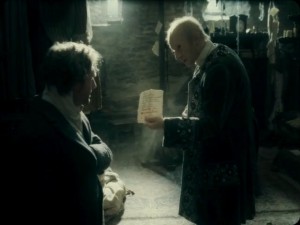 cinematography. Having combined the absorbing plot regarding human introspection and the corruption of man with hypnotic instances of beautiful imagery onscreen and delicacy of music means that director Alexander Sukurov has already received plaudits for his efforts, and the film’s reputation is growing steadily ahead of wider release.
cinematography. Having combined the absorbing plot regarding human introspection and the corruption of man with hypnotic instances of beautiful imagery onscreen and delicacy of music means that director Alexander Sukurov has already received plaudits for his efforts, and the film’s reputation is growing steadily ahead of wider release.
Released at the 68th Venice International Film Festival at the end of August last year, the picture caused a considerable stir within the panel and reviewers alike, ultimately claiming the most prestigious prize that the festival offers with Sukurov taking home the Golden Lion. After acclaimed director Darren Aronofsky presented the award, a large amount of press interest resonated throughout the movie world, with Faust rapidly becoming one of the more heavily anticipated pieces of cinema in the critical and artistic circles.
Watch/avoid: If you want to get something a bit different into your schedule before the cinemas are dominated with megabucks action blockbusters, then this is potentially a good pick for the WATCH category. However, if subtitles and European cinema is not your thing, I imagine you stopped reading after the first sentence of this write-up anyway.
The Dictator, Released 18 May
After a typically controversial and attention-grabbing PR stunt at the Oscars ceremony at the end of February wherein his newest character purportedly spilled the ashes of Kim Jong-Il over affable presenter Ryan Seacrest, Sacha Baron Cohen is back from a short absence in his latest comedy vehicle.  Working in the same vein as the widely recognisable Borat, Bruno and Ali G Indahouse, the movie sees Cohen as a character who doesn’t understand the way that the Western world works and thus integration into this world results in calamitous events transgressing.
Working in the same vein as the widely recognisable Borat, Bruno and Ali G Indahouse, the movie sees Cohen as a character who doesn’t understand the way that the Western world works and thus integration into this world results in calamitous events transgressing.
In The Dictator, Cohen is basing his character on such autocrats as Saddam Hussein and Colonel Gaddafi in an attempt to play off of and comment on American sentiments and ways of thinking. Its release will see no end of controversy, and although it will likely receive a baying crowd of supporters who lap up everything Cohen produces, it will be important to see whether Cohen has managed to establish a coherent enough message to the picture or whether it is merely a rehash of past glories that courts controversy in place of valid substance.
Watch/avoid: Cohen is intelligent enough to make this work, though it has to be questioned whether the concept is old news by now or not. It feels as though this will be no different to his past efforts, and despite an almost guarantee of raging success at the box office, it would be refreshing for Cohen to go in a completely new direction for future projects – AVOID.
She Monkeys, Released 18 May
Another of the more artistic releases of the month, the Swedish She Monkeys has been catching the eyes of critics in the nation and is released to a wider, international audience in the coming month. Telling the story of two teenage girls’ rivalry amongst an equestrian vaulting team, the picture has been lauded for its deeply cerebral and disturbing aspects, with a darkness to the film that heightens the viewing intensity, borrowing a number of its psychological elements from the excellent Black Swan.
international audience in the coming month. Telling the story of two teenage girls’ rivalry amongst an equestrian vaulting team, the picture has been lauded for its deeply cerebral and disturbing aspects, with a darkness to the film that heightens the viewing intensity, borrowing a number of its psychological elements from the excellent Black Swan.
Using a mainly non-professional cast emphasises the grittiness and reality of the She Monkeys world, and its success at film festivals in its native Sweden shows that a picture doesn’t have to be immaculately acted and produced in order to be engrossing and captivating. If it summons half the evocative imagery and excellently drawn and motivated characters as the gorgeous 2008’s Let the Right One In from the same nation, then this will be a surprising hit.
Watch/avoid: In a month saturated by comedy sequels and Sacha Baron Cohen rehashes, now might be the right time to venture outside of the box and view something with a bit more thought and pathos behind it ahead of blockbuster season – WATCH. Pick of the month.
Men in Black 3, Released 25 May
Finally this month we cover the return of the Men in Black franchise with Men in Black 3 reaching the screen fifteen years after the first instalment was released. With Will Smith and Tommy Lee Jones returning in their roles in the comic sci-fi flick, the premise lies predominately in the former’s character venturing back in time in order to stop an alien assassination attempt on Jones’ character in 1969. While this perhaps is a crutch to excuse the now 65 year old Jones from some of the more adventurous action scenes, it does perhaps also serve the purpose of introducing Josh Brolin into the role to potentially star alongside Smith in a future instalment at the expense of Jones.
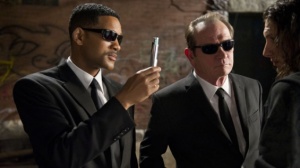 Again, as with American Reunion and The Dictator, Hollywood is relying on tried and tested formulae which have an audience intact from over a decade ago, but what this spells for Will Smith’s career remains to be seen. Obviously the offer from the 215 dollar production of MIB 3 was too good to refuse, yet after spending such a long time in his career distancing himself from comedy roles to establishing himself as an action star, a return to this franchise seems like a step in the wrong direction for the talented Smith. However Smith will likely be just energetic enough in the role to spin this picture into the positive it has the potential to be and bag the truly spectacular role that has been eluding him for a while now. As long as we don’t see another dip into the dire Wild West franchise, he should be fine though.
Again, as with American Reunion and The Dictator, Hollywood is relying on tried and tested formulae which have an audience intact from over a decade ago, but what this spells for Will Smith’s career remains to be seen. Obviously the offer from the 215 dollar production of MIB 3 was too good to refuse, yet after spending such a long time in his career distancing himself from comedy roles to establishing himself as an action star, a return to this franchise seems like a step in the wrong direction for the talented Smith. However Smith will likely be just energetic enough in the role to spin this picture into the positive it has the potential to be and bag the truly spectacular role that has been eluding him for a while now. As long as we don’t see another dip into the dire Wild West franchise, he should be fine though.
Watch/avoid: As it is a comedy month, this is up there with The Dictator to be most successful at the box office, however this picture perhaps edges the battle with the fondly remembered MIB concept having waited a decade since the last instalment – WATCH.
That does it for this month, be sure to let your thoughts be heard on these films and any not on the list that you’re dying to see in the comments section below and don’t forget to press the like button.
Posted in Entertainment, Film, Media, Movies, RhettMedia
Tags: 2012, 84th Academy Awards, Academy Awards, Alexander Sukurov, Ali G, Ali G Indahouse, Alice In Wonderland, Alyson Hannigan, American Pie, American Reunion, Ben Kingsley, Black Swan, Borat, Bruno, Burton and Depp, Charlie and the Chocolate Factory, Cinema Releases May 2012, Colonel Gaddafi, Dark Shadows, Darren Aronofsky, Ed Helms, Entertainment, Eugene Levy, Faust, Faust 2011, Film, Forgetting Sarah Marshall, Golden Lion, Helena Bonham Carter, How I Met Your Mother, Jason Biggs, Jason Segel, Jeff, Johnny Depp, Josh Brolin, Judy Greer, Kim Jong-Il, Let the Right One In, Mad Hatter, Media, Megan Fox, Men In Black, Men In Black 3, Michelle Pfeiffer, Mila Kunis, Movie Releases May 2012, Movies, Natalie Portman, Oscars, RhettMedia, Ryan Seacrest, Sacha Baron Cohen, Saddam Hussein, Seann William Scott, She Monkeys, She Monkeys 2011, She Monkeys 2012, Sir Ben Kingsley, Susan Sarandon, Sweeney Todd, Tara Reid, The Dictator, Tim Burton, Tommy Lee Jones, UK Film Release Dates, UK Film Release Dates May 2012, Upcoming, Upcoming May 2012, Vampire, Venice International Film Festival, Who Lives At Home, Will Smith, Willy Wonka
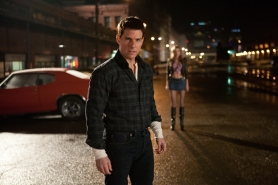 Tom Cruise is very much still Tom Cruise. Delving into the action genre once more, Cruise’s latest picture is an adaptation of the popular Lee Child novel One Shot. With a thirty year career at the top of the box office, Cruise has the ability to pick and choose roles that he has the most faith in, and with Jack Reacher it is clear that his selection process involves sticking firmly to his comfort zone.
Tom Cruise is very much still Tom Cruise. Delving into the action genre once more, Cruise’s latest picture is an adaptation of the popular Lee Child novel One Shot. With a thirty year career at the top of the box office, Cruise has the ability to pick and choose roles that he has the most faith in, and with Jack Reacher it is clear that his selection process involves sticking firmly to his comfort zone.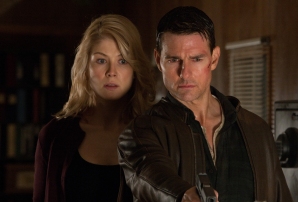 Hollywood thriller. The action itself is decent enough, with enough set pieces and violence to satiate those looking for buzzes, with the crime back-drop providing just enough story to keep the film ticking over. Where the film hits its high points though is in its humour, never quite taking itself completely seriously as a Tom Cruise picture often does. In addition, the supporting cast is respectable enough for Cruise to bounce off without being overshined, with Rosamund Pike offering a good romantic foil and exchanges with the excellent David Oyelowo manufacturing the film’s highlights. In this regard, the film is well-balanced, with self-deprecation providing the anchor to what could potentially have been little more than a Tom Cruise vanity project.
Hollywood thriller. The action itself is decent enough, with enough set pieces and violence to satiate those looking for buzzes, with the crime back-drop providing just enough story to keep the film ticking over. Where the film hits its high points though is in its humour, never quite taking itself completely seriously as a Tom Cruise picture often does. In addition, the supporting cast is respectable enough for Cruise to bounce off without being overshined, with Rosamund Pike offering a good romantic foil and exchanges with the excellent David Oyelowo manufacturing the film’s highlights. In this regard, the film is well-balanced, with self-deprecation providing the anchor to what could potentially have been little more than a Tom Cruise vanity project.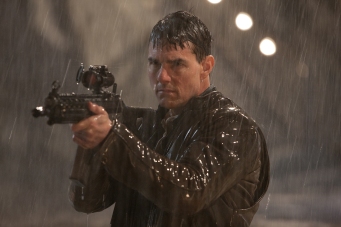 from a business point-of-view. However, the problem with this film lies in the typical arc of Tom Cruise self-aggrandising as a top-rank action movie star, where amid extended car chases, a 5-on-1 brawl won by Cruise and an eyebrow-raising martial arts face-off in the pouring rain, we are beaten over the head with the aggressive ongoing agenda trying to market Tom Cruise as the ‘coolest man in the world’. Add to this the ‘epic’ speeches that come across as stilted and clichéd, and there have to be questions raised as to whether or not Cruise can still believably perform these roles and whether he should really be pushing himself to reinvigorate his career. The film suffers at Cruise’s insistence to play the hero, and with such a widely scrutinised reputation and personal life reflective of modern attitudes to celebrity culture, it may prove far more critically fruitful for Cruise to contemplate his role selection more deeply, in particular to stop playing the hero and start becoming the screen villain that his pop cultural reputation affords him.
from a business point-of-view. However, the problem with this film lies in the typical arc of Tom Cruise self-aggrandising as a top-rank action movie star, where amid extended car chases, a 5-on-1 brawl won by Cruise and an eyebrow-raising martial arts face-off in the pouring rain, we are beaten over the head with the aggressive ongoing agenda trying to market Tom Cruise as the ‘coolest man in the world’. Add to this the ‘epic’ speeches that come across as stilted and clichéd, and there have to be questions raised as to whether or not Cruise can still believably perform these roles and whether he should really be pushing himself to reinvigorate his career. The film suffers at Cruise’s insistence to play the hero, and with such a widely scrutinised reputation and personal life reflective of modern attitudes to celebrity culture, it may prove far more critically fruitful for Cruise to contemplate his role selection more deeply, in particular to stop playing the hero and start becoming the screen villain that his pop cultural reputation affords him.


